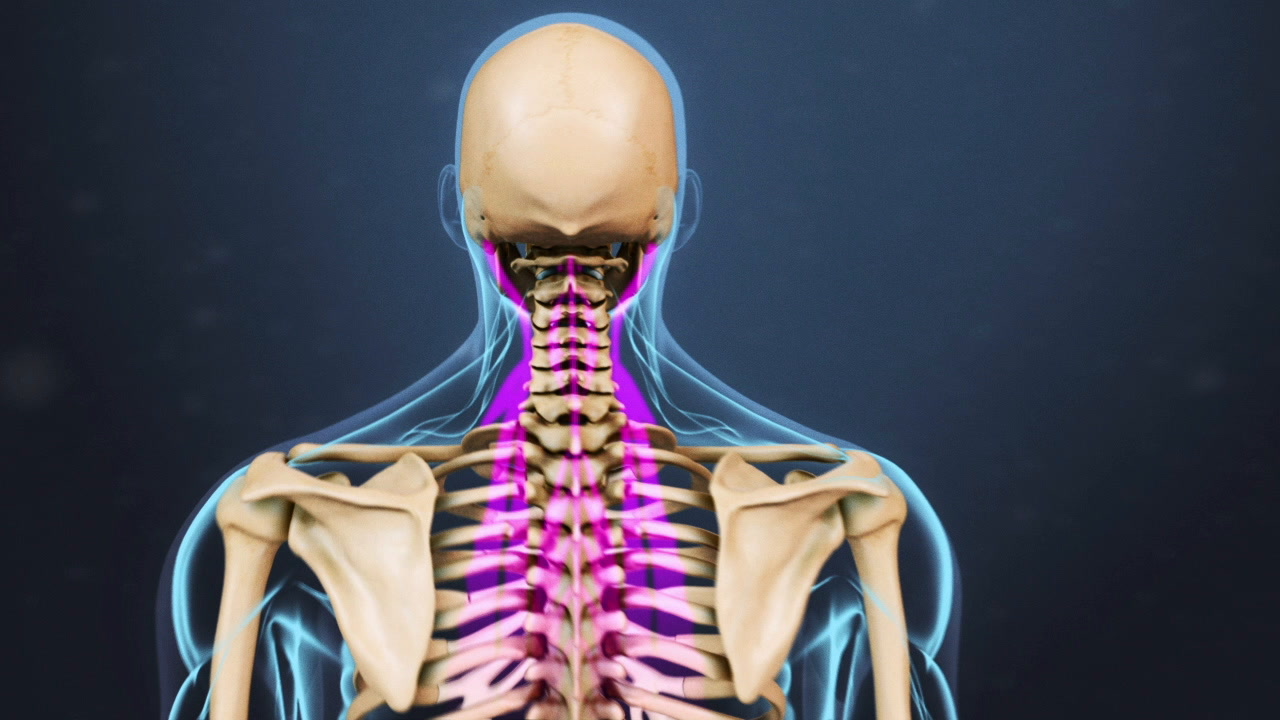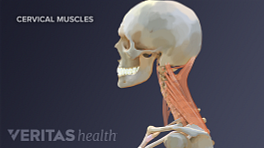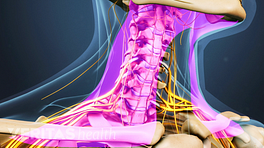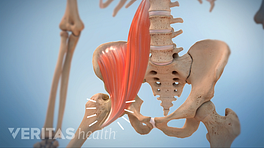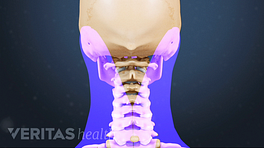A neck strain or sprain occurs when one or more muscles, ligaments, or tendons in the neck are injured.
The cervical spine has a wide range of motion in all directions. This motion is supported by a complex structure of muscles, ligaments, and tendons.
The large neck muscles, such as the sternocleidomastoid and the trapezius, enable the gross motor movements in the neck. The large, triangle-shaped trapezius connects the back of the neck and the shoulders.
A neck strain affects cervical muscles and tendons—bands of fibrous tissue that connect the muscles to bones.
Sprains affect the ligaments—bands of fibrous tissue that connect the vertebral bones to each other and provide stability to joints.
Neck strains and sprains occur when these soft tissues are stretched beyond their normal limits or torn, causing pain, tenderness, and difficulty moving the neck.
Neck pain may radiate into the shoulder and over the shoulder blade and upper back when the trapezius muscle is strained.
Neck strains and sprains can occur either due to a sudden injury, such as a car accident that forces the head suddenly forward and then backward in a whiplash motion.
These injuries can also develop over time due to poor posture.
Muscle strain in the neck can also be accompanied by inflammation around the injured tissue, and neck muscle spasms as the body tries to stabilize the injury. These muscle spasms can be quite painful.
Many cases of neck strain or sprain will resolve after a few days, but flare-ups or aching pain may continue for weeks or months after the initial injury.
